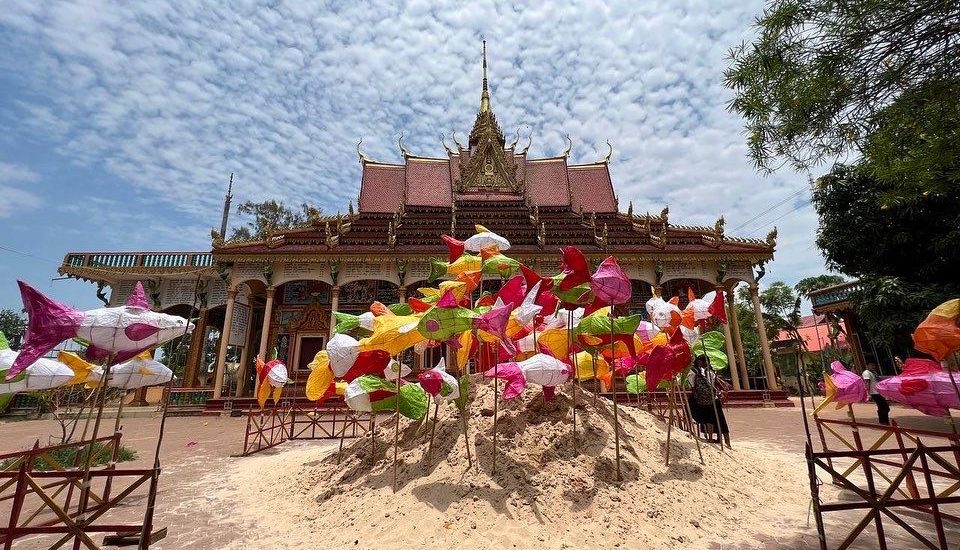June is the time of year when one starts thinking a lot about water in Hong Kong. It gets especially humid and sultry in the Asian financial hub, the pools and beaches fill up, and the rain falls more frequently and violently. More broadly in Asia, the monsoon covers the months between April and September, with various rainy seasons arriving or ongoing in June for many countries. Water is a critical resource that is especially precious for local communities in the Global South. In Cambodia, the lake of Tonle Sap – the largest lake in the world – is one of the only major lakes that rises (June) and falls (November) by a stunning 6 meters. The dramatic rise and fall of Tonle Sap’s levels affects the ecosystem, fishing and tourism, and health. But with good management and community education, this need not be a peril but an opportunity.
Ocean Recovery Alliance (ORA) and its Cambodian partner, NGO2 Bambooshoot Foundation, have been promoting the above for the past four years with the Water Rising and Water Falling festivals in June and November respectively, with the goal of bringing awareness and water appreciation to villages along Tonle Sap. This year, the Water Rising Festival will be hosting the “Inland Ocean Festival,” the first of its kind, from 17–18 June, which are meant to coincide with important dates like the UN’s World Ocean Day (the 8th) and World Environment Day (the 5th).
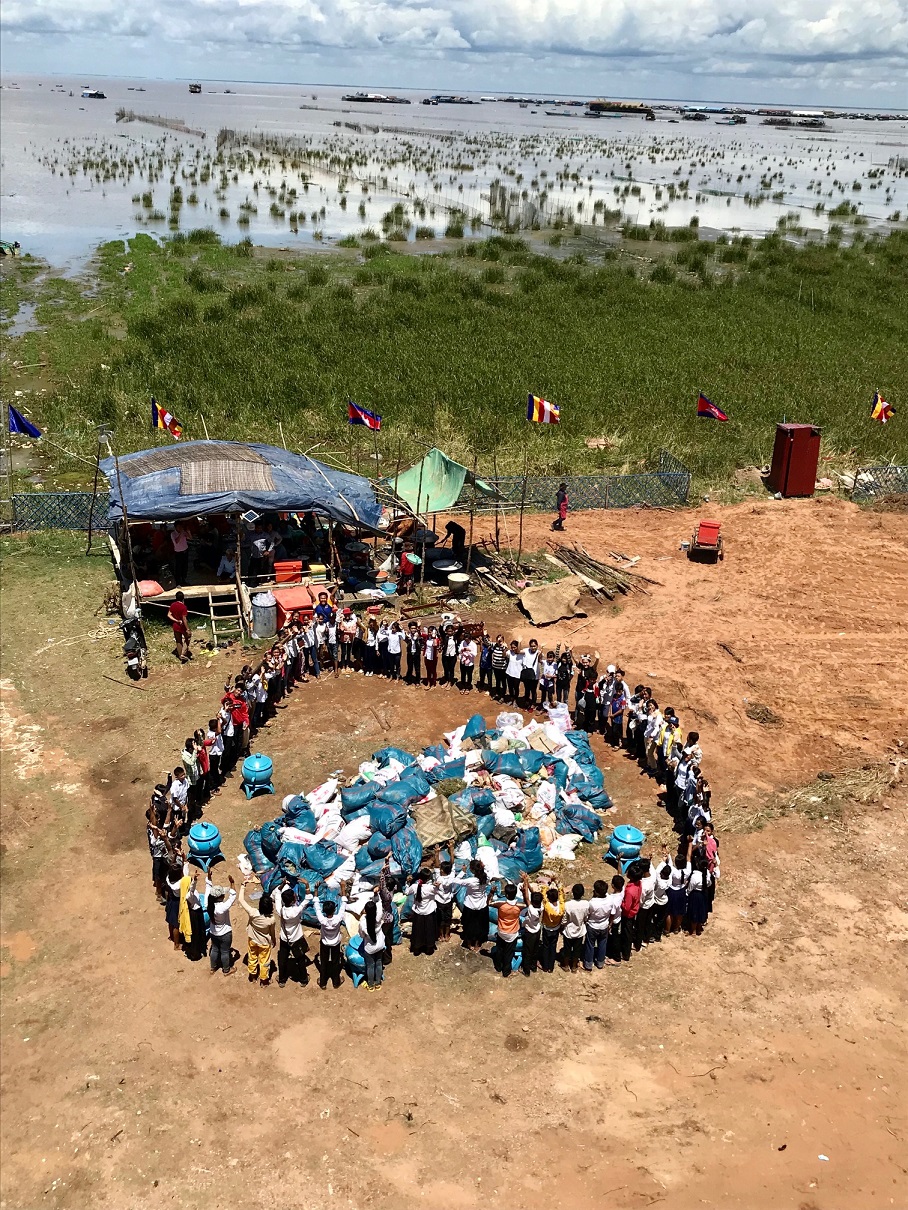
Douglas Woodring, co-founder of the Ocean Recovery Alliance, told me that the rise and fall of Tonle Sap’s waters resemble that of “one big single-moving tide, in and out” – hence the lake’s epithet of an inland ocean, a moniker that ORA first coined but is catching on with the Cambodian government. “When that happens, it also pulls the plastic ‘out’ from the villages, and into all of the trees, bushes and lake, and then when it comes back in, it pushes it all back into the villages.”
The villages along this unique lake are highly dependent on fishing resources and tourism, yet lack the technical knowledge to manage waste and recycle. “This year we are celebrating the ‘inland ocean’ name, the lake, and its very fragile ecosystem, where over 180 communities survive on fishing (which has been under threat from overfishing, pollution and dams upstream of the Mekong). It is also host to a UNESCO Bird Sanctuary site. So, it’s a perfect chance to move this name to a higher awareness level, which brings more protection, pride for the outdoors, and engagement to improve and protect the environment. We hope everyone has the chance to see this extraordinary place!”
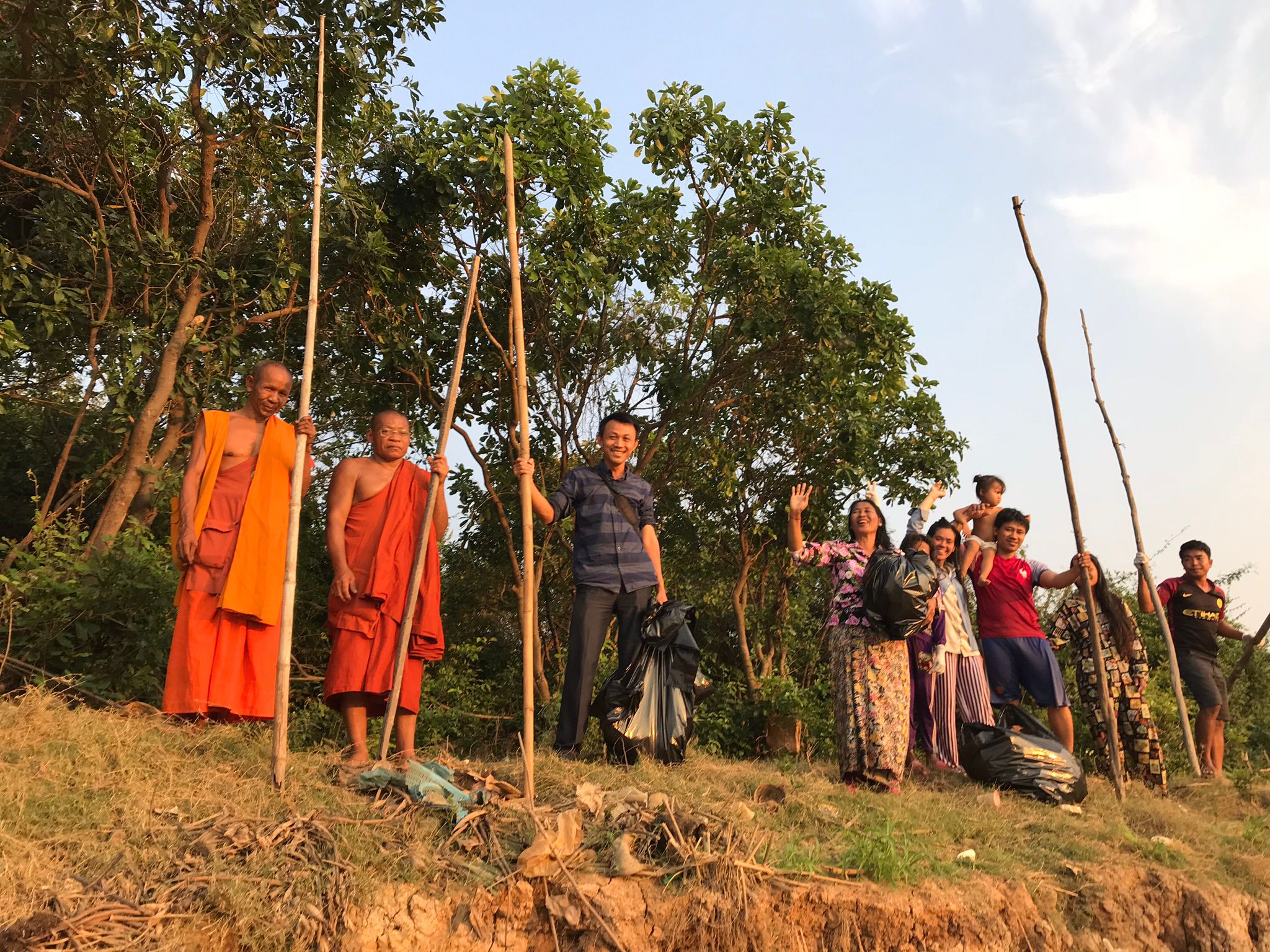
Among the many villages that were candidates for hosting the festival, the stilted and floating community of Kampong Phluk was chosen for its beautiful lakeside and its popularity in the tourist consciousness. “But they never had a big ‘event,’ so we want this to become an eco-tourist destination event for the world to see, and we’re sure it will happen when people see the images of the night parade by over 120 youth and the Baby Puppets they made in our workshop two weeks ago, run by our collaborating partners, the Giant Puppet Project,” said Mr. Woodring.
“The imagery is already phenomenal and infectious. So, when we picked the village, they were very excited that we selected them. We then did parade training with the students, but never told anyone what was actually happening as they marched through the village with the big colorful lake animals. Now they know, but it created all kinds of curiosity and excitement.”
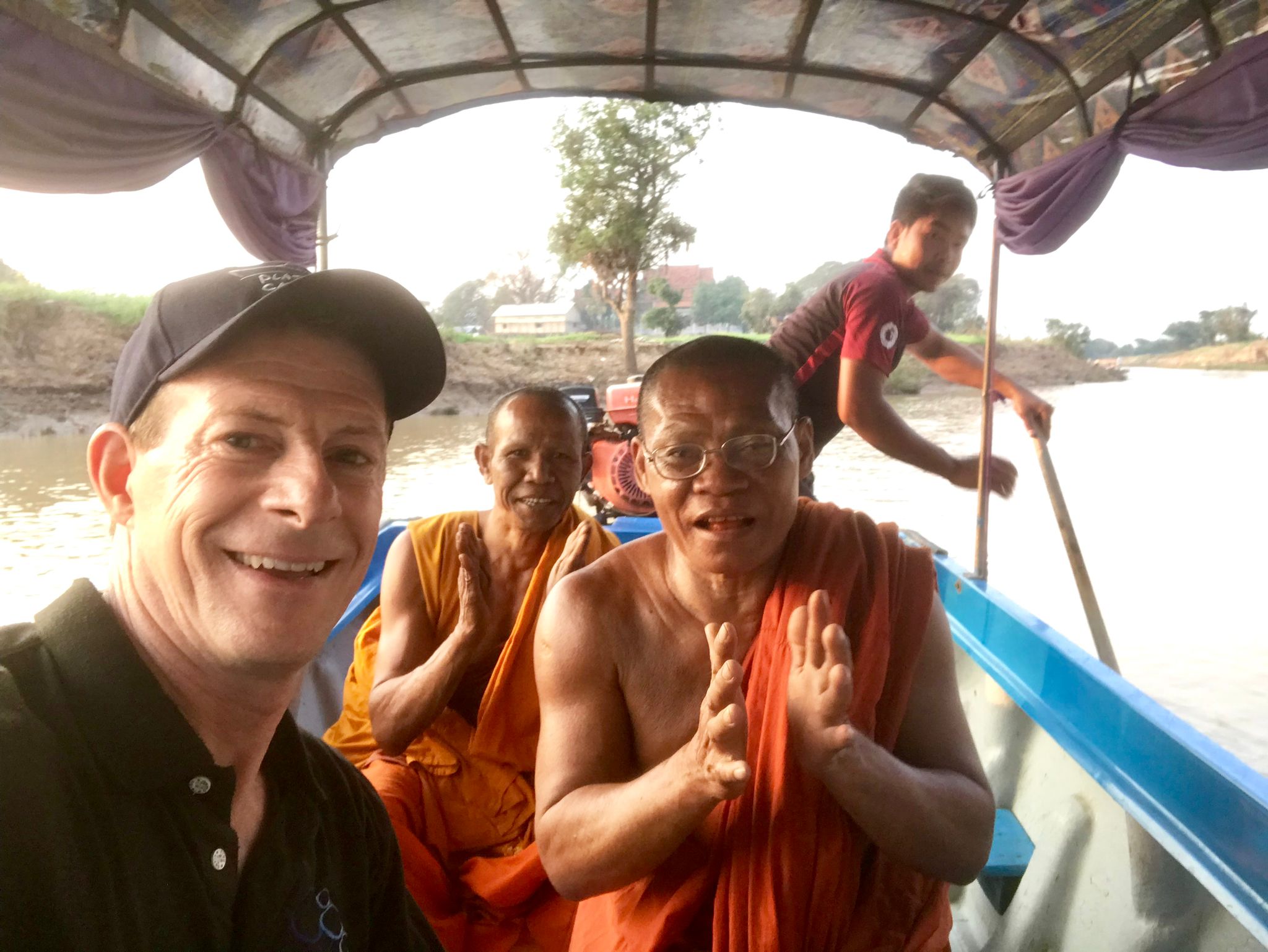
The entire community was involved, including the spiritual core of the village, the Buddhist monastics. “Within one hour of meeting the head monk in one village, with no previous introduction, we had them working with us on the banks of the canal, picking plastic out of the trees with long bamboo poles, setting precedent and examples for the community along the way.” Mr. Woodring observed that all of the boat drivers slowed down to watch this unprecedented sight, curious as to why the monks were on the banks with long poles and picking out plastic from the trees. With the support of the monks, the initiative quickly gained community and village support. There is now the added bonus of the monks’ visibility in helping to retrieve plastic, encouraging other villages to do the same.
“The kids of Kampong Phluk loved the workshop we did with them two weeks ago, and over 120 of them learned how to make Baby Puppet Lanterns with rattan and paper, plus a few LED lights for the night parade. Their smiles, energy, and engagement infected the entire community and even the nation (through social media and press posts), and the event hasn’t even happened yet!”
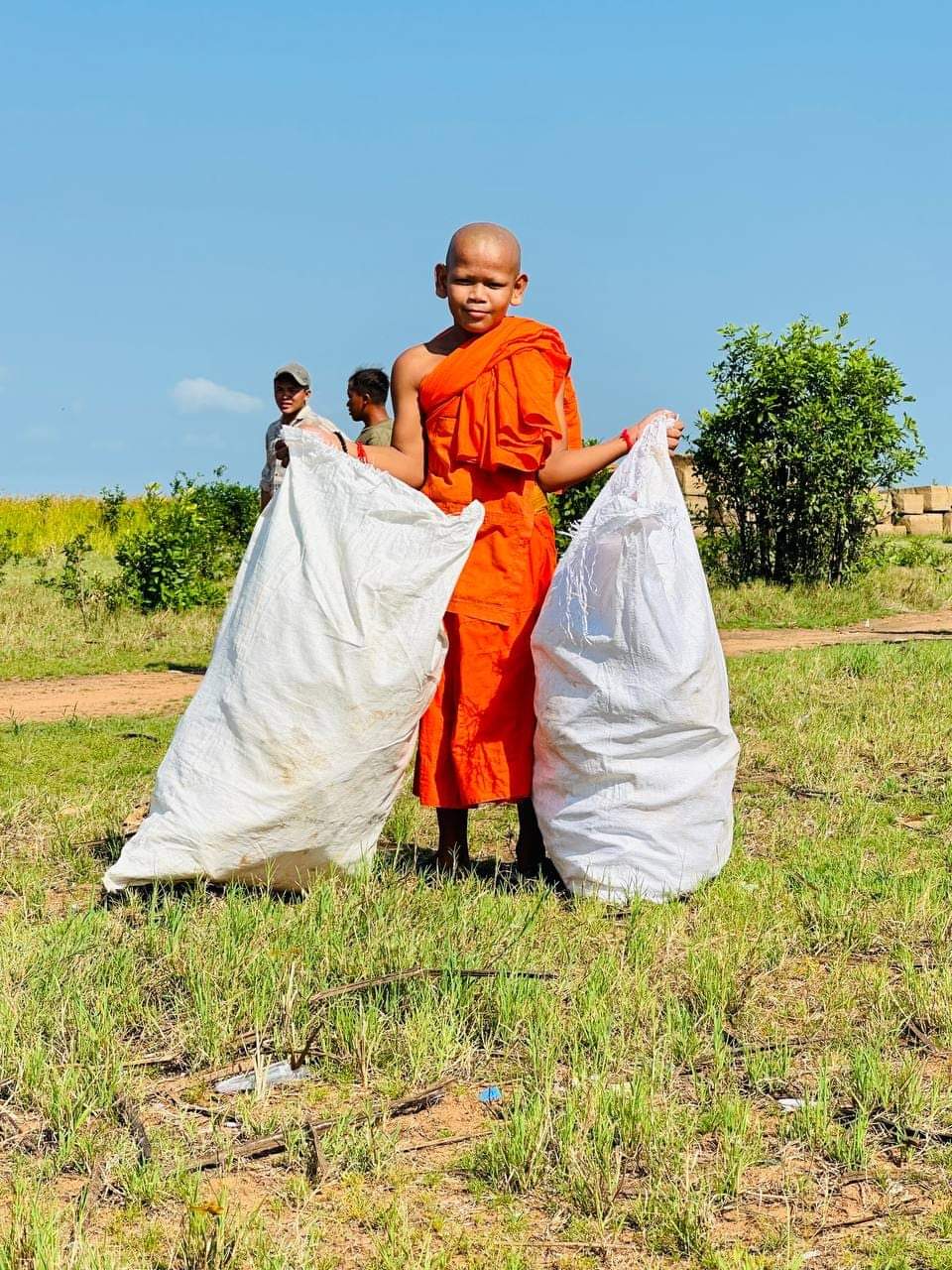
ORA has also received keen government support, with the organization receiving a donation of 3,000 kilograms of rice. The rice will be used as prizes as giveaways for the top 100 families that collect the most plastic from their households for the Harvest Plastic program. Each winning family will get 10 kilograms of rice. Mr. Goodring said: “By ‘harvesting all of their plastic’ in our big rice bags (branded as Harvest Plastic) directly from the household, it means that plastic is not contaminated from other waste. This is key, and critical, to better recovery of the material and recycling, and it is not burned or dumped. This is also critical, as it then doesn’t impact the lake or the air.”
The World Bank estimates that up to 40 per cent of global trash is simply burned, uncontrolled in front and back yards. This is a horrific situation for the environment, creating respiratory issues, carbon black (the second leading cause of global warming), and the presence of plastic toxins and chemicals in the air. These toxins, in turn, rain down onto crops and waters. Mr. Woodring notes that this is the most under-discussed big issue with waste globally. “On the Harvest Plastic side, we are able to hand-sort the material, creating new job opportunities, and also recovering up to 60 per cent of the total plastic, which is actually a world-leading number for most jurisdictions: for example, Hong Kong is under 4 per cent, and even the US is only under 20 per cent.”
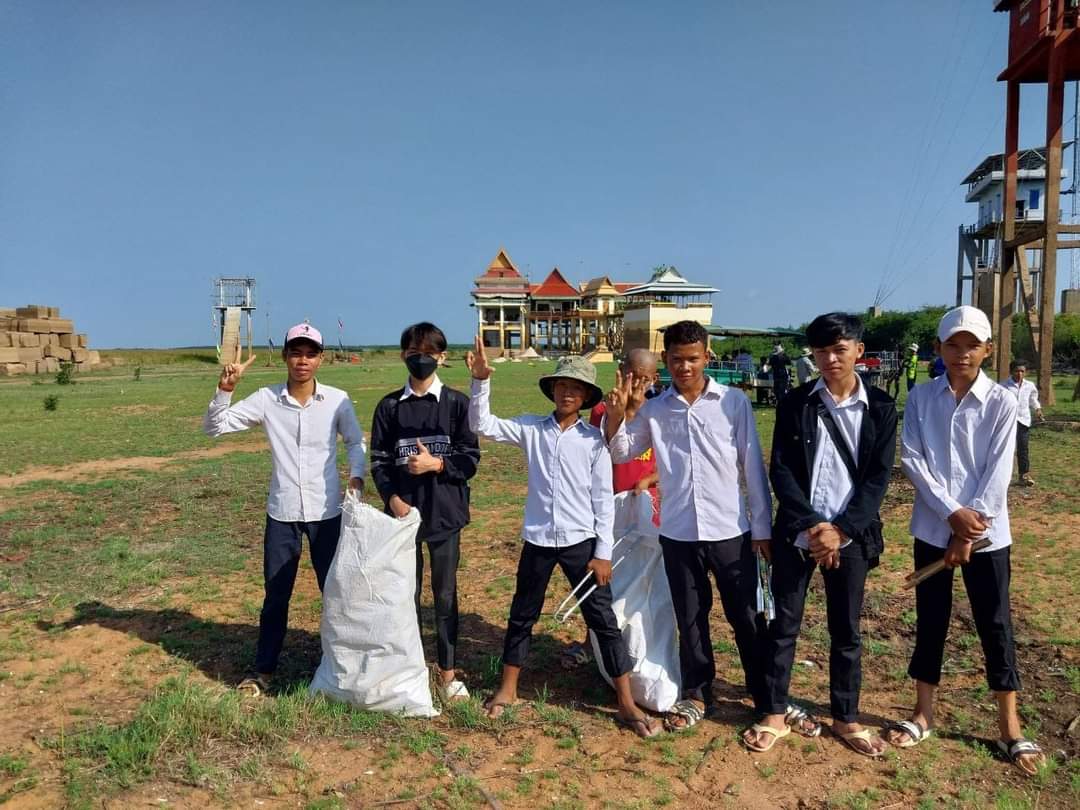
Through events like the Inland Ocean Festival, ORA aims to focus attention on the simple yet profoundly amazing assets before them – “the waters, the environmental surroundings that some might have taken for granted before. But now there’s a proper event highlighting their home’s resources, heritage, and scenery, with a lot of press, and tons of color. The kids, especially, are suddenly waking up to the fact that they live in a place that the rest of the world sees as a global paradise: on the lake of Cambodia’s Inland Ocean, the Tonle Sap!” concluded Mr. Woodring.
“With this being the off-season for tourism, it’s a perfect way to show tourists that things still happen at this time of the year, and that they should come to witness this sometime! This then brings more pride to the locals to protect and preserve what they have. We already can’t wait for next year.”
ORA expects this inaugural festival to lay a good foundation for partnership between the government, community leaders, and their communities in addressing plastic issues for the good of all parties involved. Mr. Woodring noted: “Also, as a small NGO with limited resources, we hope the festival will attract corporate or foundation sponsorship or donations to keep it going next year, from both within Cambodia, and internationally.”
Related features from BDG
Maha Ghosananda: Cambodia’s Great Advocate for World Peace


